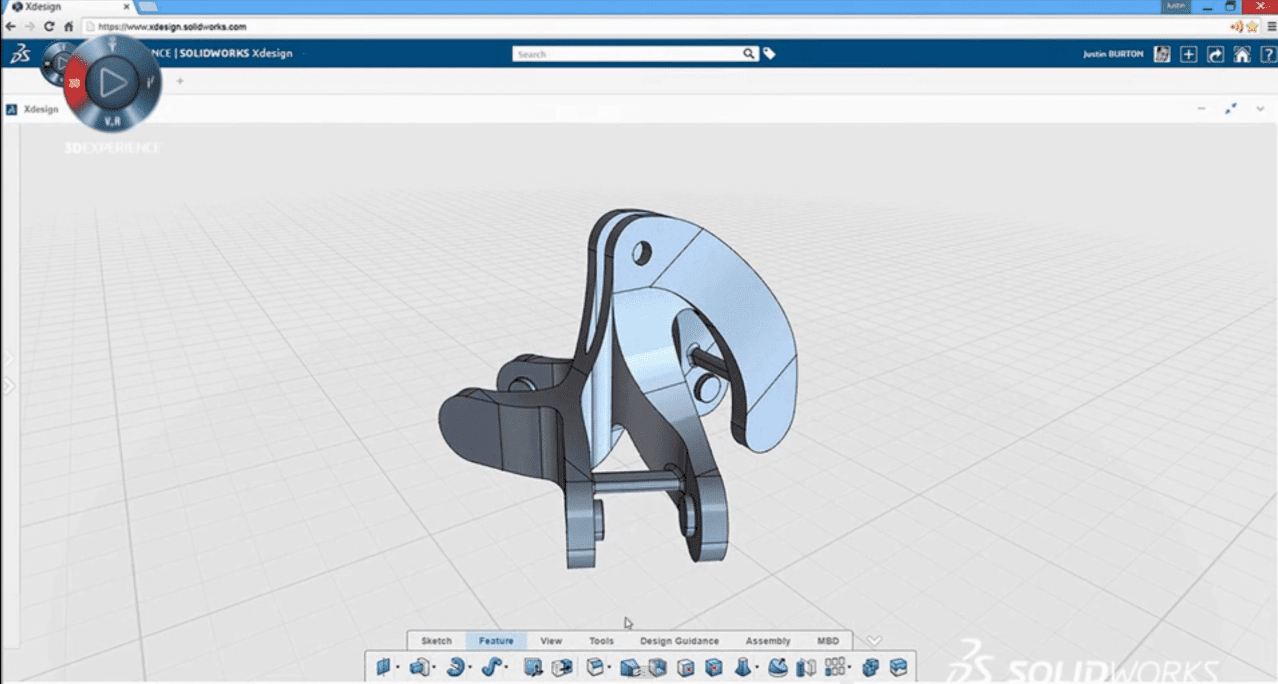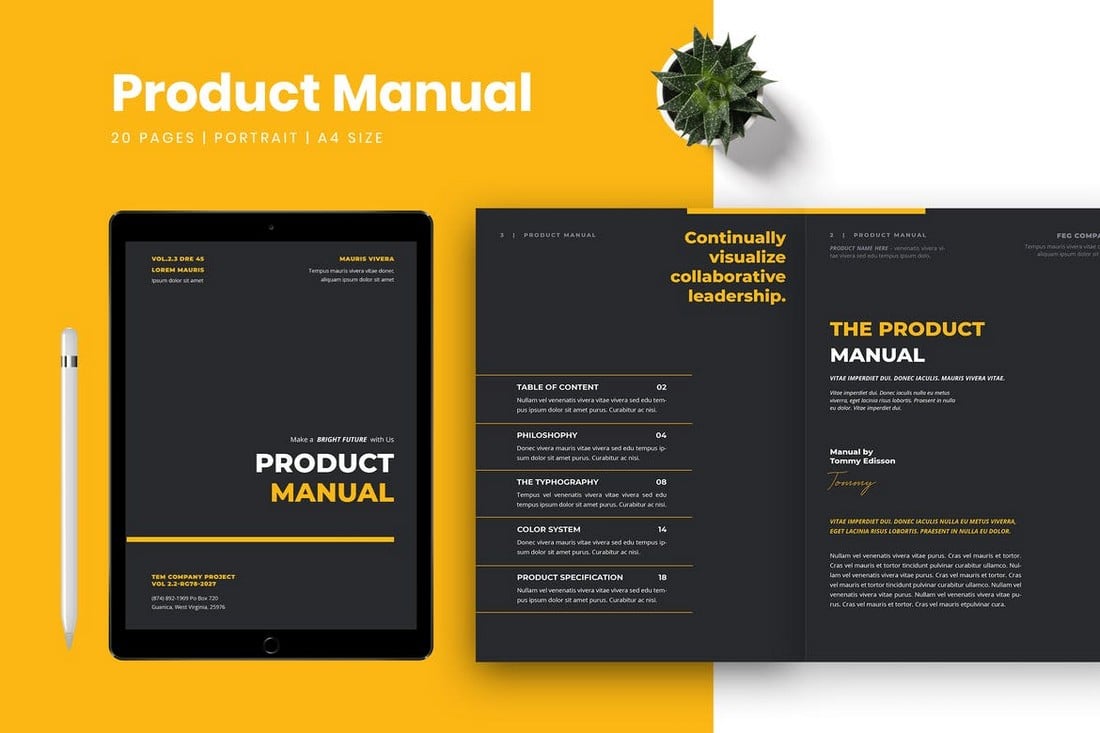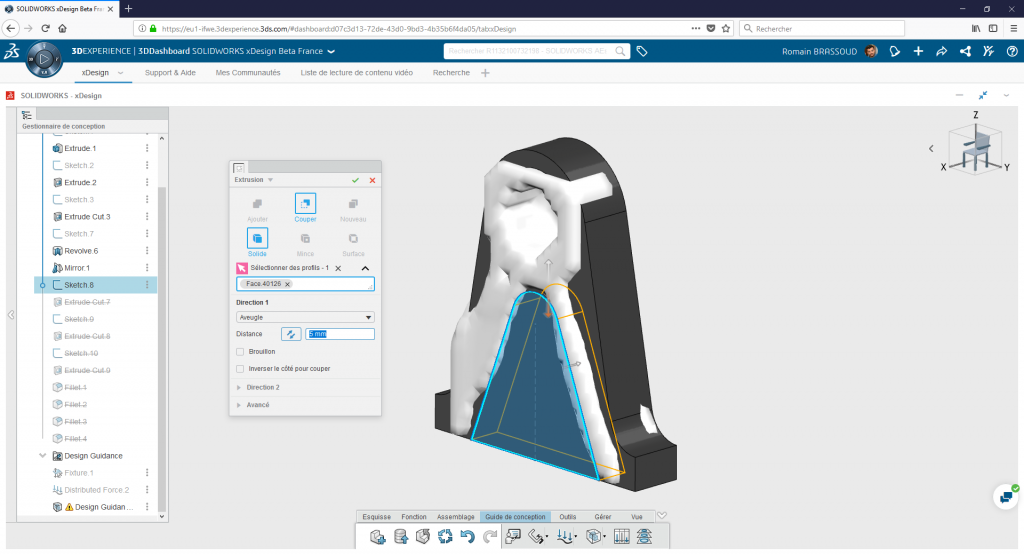


Instead, the platform provides a suite of applications that each carry out a different modeling function. However, this does not mean that the platform provides a 1:1 cloud-based program that looks just like SOLIDWORKS. The 3D modeling tools on the 3DEXPERIENCE platform are sometimes referred to as SOLIDWORKS Cloud. To understand the difference in the tools, it is first important to get some insight into the structure of the 3DEXPERIENCE platform. There won’t be a single standalone application on the 3DEXPERIENCE platform that gives you all the robust capabilities of SOLIDWORKS Desktop, but you can tailor your library of tools to serve the modeling needs that you are accustomed to having. The long answer: since the CAD tools on the 3DEXPERIENCE platform are built to serve a collaborative, mobile environment, the tools are often streamlined or segmented to offer a less cluttered UI for the user. In the following example, Mutant Enemy is the primary production company, and “Hush” was released in 1999.The short answer: the 3D modeling tools are essentially the same. If you’re versed in the parametric language of SOLIDWORKS desktop, you’ll find that most of the tools look and act similarly to what you are accustomed to. If you’re unsure about which date to use, go with the date of the source’s original publication. When the source has more than one date, it is sufficient to use the date that is most relevant to your writing.
XDESIGN STYLE AND FORMATTING GUIDE SERIES
For example, a television series might have aired on a broadcast network on one date, but released on Netflix on a different date. The same source may have been published on more than one date, such as an online version of an original source. Note : The publisher’s name need not be included in the following sources: periodicals, works published by their author or editor, websites whose titles are the same name as their publisher, websites that make works available but do not actually publish them (such as YouTube, WordPress, or JSTOR).

Deedle-Dee Productions and Universal Media Studios, 2015. End this element with a period.ĭaniels, Greg and Michael Schur, creators. Authorīegin the entry with the author’s last name, followed by a comma and the rest of the name, as presented in the work. In the current version, punctuation is simpler (only commas and periods separate the elements), and information about the source is kept to the basics. Earlier editions of the handbook included the place of publication and required different punctuation (such as journal editions in parentheses and colons after issue numbers) depending on the type of source. In your citation, the elements should be listed in the following order:Įach element should be followed by the corresponding punctuation mark shown above. These are the general pieces of information that MLA suggests including in each Works Cited entry.
XDESIGN STYLE AND FORMATTING GUIDE HOW TO
When deciding how to cite your source, start by consulting the list of core elements. Once you are familiar with the method, you can use it to document any type of source, for any type of paper, in any field. This gives writers a flexible method that is near-universally applicable. While the handbook still describes how to cite sources, it is organized according to the process of documentation, rather than by the sources themselves. Thus, the current system is based on a few guiding principles, rather than an extensive list of specific rules. Since texts have become increasingly digital, and the same document may often be found in several different sources, following a set of rigid rules no longer suffices. MLA is a style of documentation that may be applied to many different types of writing. Creating a Works Cited list using the ninth edition Note: For more information about services for the Purdue University community, including one-to-one consultations, ESL conversation groups and workshops, please visit the Writing Lab site.


 0 kommentar(er)
0 kommentar(er)
